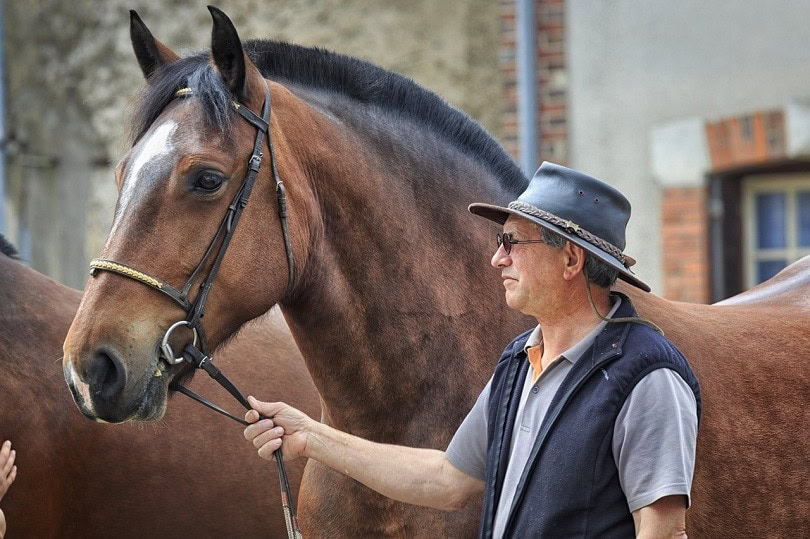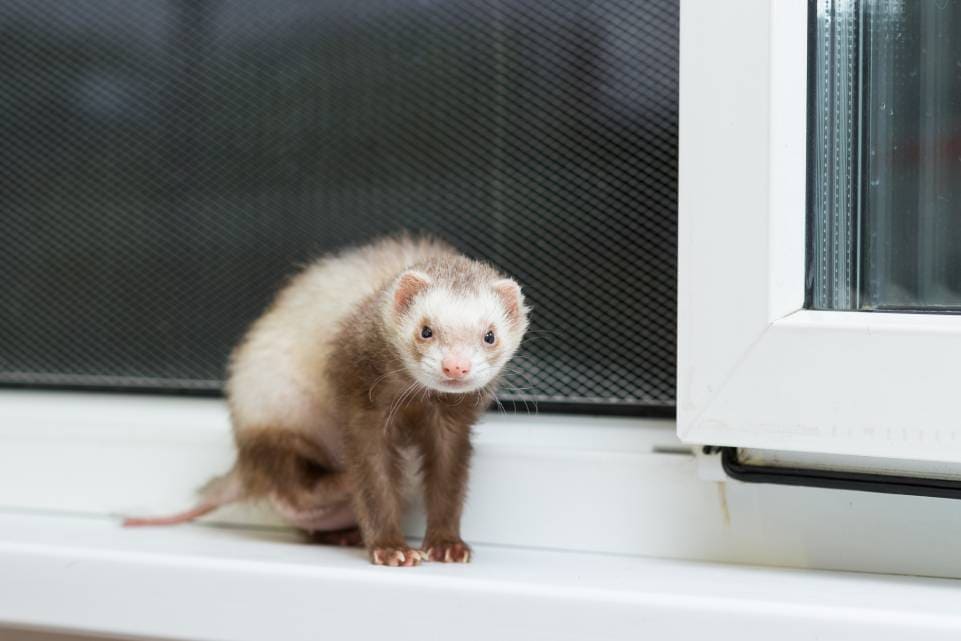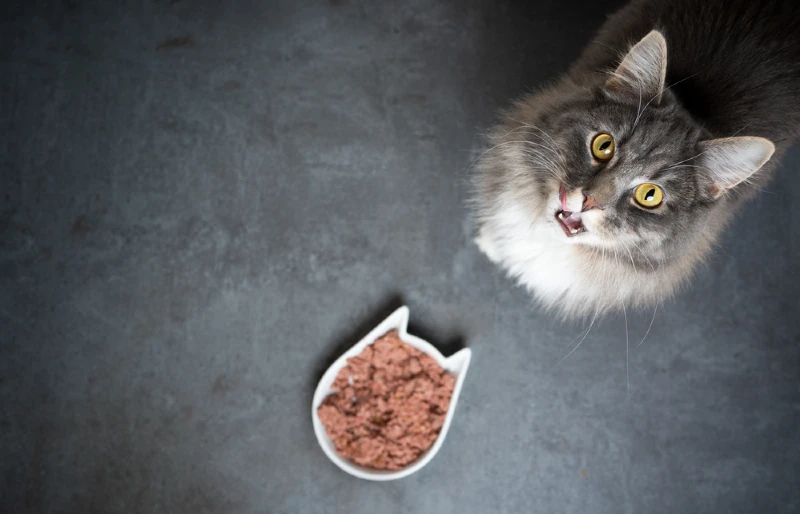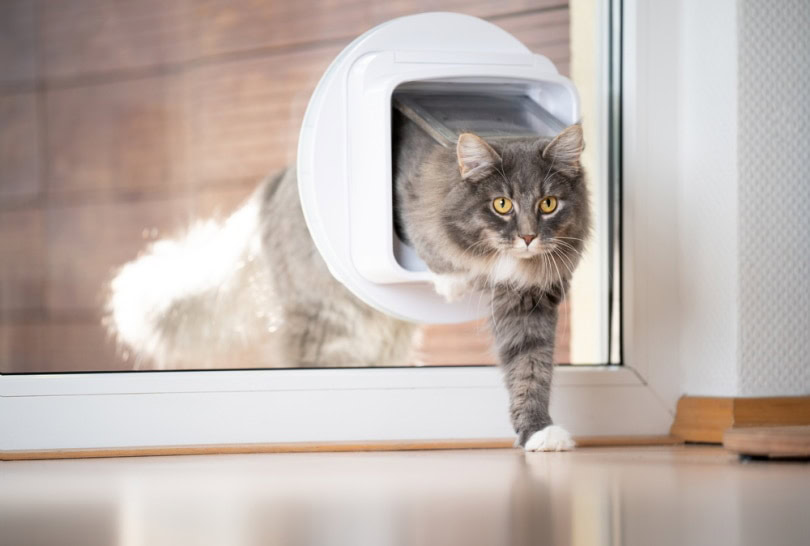VET APPROVED

The information is current and up-to-date in accordance with the latest veterinarian research.
Learn more »Click to Skip Ahead
Horses make incredibly versatile pets that you can befriend, ride, and even use to help perform a wide range of different tasks. Of course, weighing in upwards of 1.000 pounds and often standing more than six feet tall at the withers, horses are some of the largest pets you’re likely to own. As such, they require very different care than most pets, such as dogs, cats, birds, lizards, or fish. However, with the right knowledge and preparation, providing proper care for a horse can be manageable and highly rewarding. We’re going to cover all of the basics in this article, preparing you to properly care for your horse.

Horse Facts
Horses, along with dogs and cats, have evolved alongside humans as our domesticated partners for thousands of years. Though horse populations dwindled at the end of the last ice age nearly 10,000 years ago, many remained in Asia and Europe, where scholars believe horses were first domesticated about 5,500–6,000 years ago.
The domestication of horses was a major event in human history. Prior to this, we could travel on foot, using boats, and using other animals. However, horses allowed us to quickly travel long distances on land and carry large loads.
Today, horses are found in practically every region on Earth, and they can live to be more than 30 years old. The Przewalski’s horse of Mongolia is thought to be the only surviving wild horse species on Earth.
In total, there are more than 350 different horse breeds. They range from large, heavy draft horses to sleek and fast horses often used for racing, to smaller horses known as ponies.
Of all the horse breeds in existence, the American Quarter Horse is the most popular breed in the U.S. They’re also the fastest at short distances, capable of reaching speeds up to 55 miles per hour (or 88.5 kilometers per hour)!
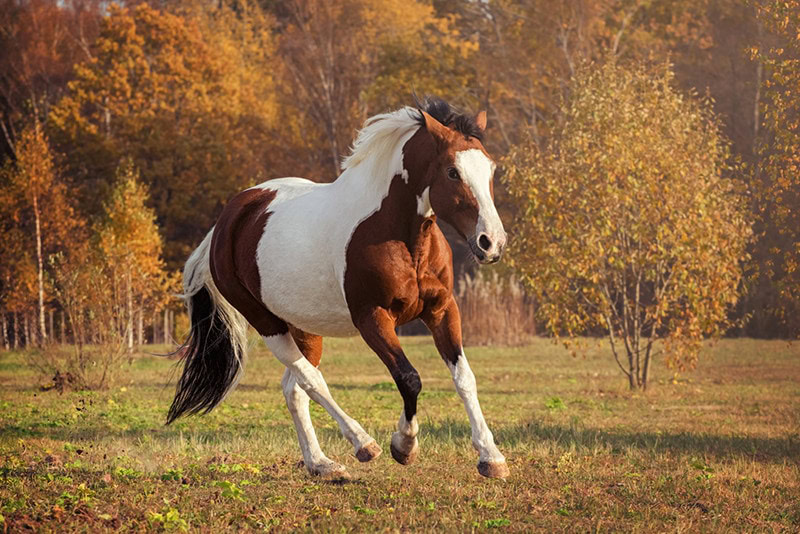
Do Horses Make Good Pets?
Horses make excellent pets, but they do require a significant amount of care. Due to their large size, they have much greater needs than most other pets. Take dogs and cats, for instance. While a medium-sized dog might drink a quarter of a gallon of water each day, a horse could drink 20 times that amount!
Things are similar regarding food. A fully-grown horse can easily consume 20 pounds of hay every single day! That’s going to take many trips to load up on hay bales, a large space to store them, and you’ll have to go out every day and fork that hay into your horse’s enclosure.
Of course, there are plenty of other time investments you’ll have to make when you’re a horse owner. Your horse’s stall will be filling up pretty quickly with manure. After all, 20 pounds of hay makes quite a bit of waste! You’ll have to muck that waste out regularly to ensure it doesn’t build up.
Horses can be affectionate, just like other animals, in their own unique way. However, your horse won’t provide the same type of cuddly affection that you might expect from your dog or cat. A horse will never be able to curl up with you or even come inside the house!

Where Can I Get a Horse?
Once you decide that you’re able to provide the high level of care that a horse requires, there are many ways you can get one. Horses can be purchased from individuals, breeders, auctions, or dealers. The price of a horse can vary widely depending on factors like age, breed, training, and health, so purchasing from a dealer is not always more expensive than buying from an individual. Some sellers may offer health records or limited guarantees, but it’s always advisable to have a thorough veterinary exam before buying.
You can find dealers and individuals on sites like EquineNow and DreamHorse that act as marketplaces specifically for the buying and selling of horses. Alternatively, you can check classified sites like craigslist or your local newspaper to find listings of horses for sale.
Sometimes, you can luck into finding an individual who’s giving a horse away because they can no longer care for it for some reason, be it financial, physical, or anything else. However, free horses may come with additional challenges, such as medical conditions, behavioral issues, or training gaps, which can lead to significant long-term costs.
Of course, there are other alternatives. For example, you could lease a horse. In such a contract, you’ll have to pay a monthly fee and you’ll have access to the horse on a schedule. This way, you don’t have to spend quite as much time, money, or effort on the horse as the animal’s care is split between multiple people.
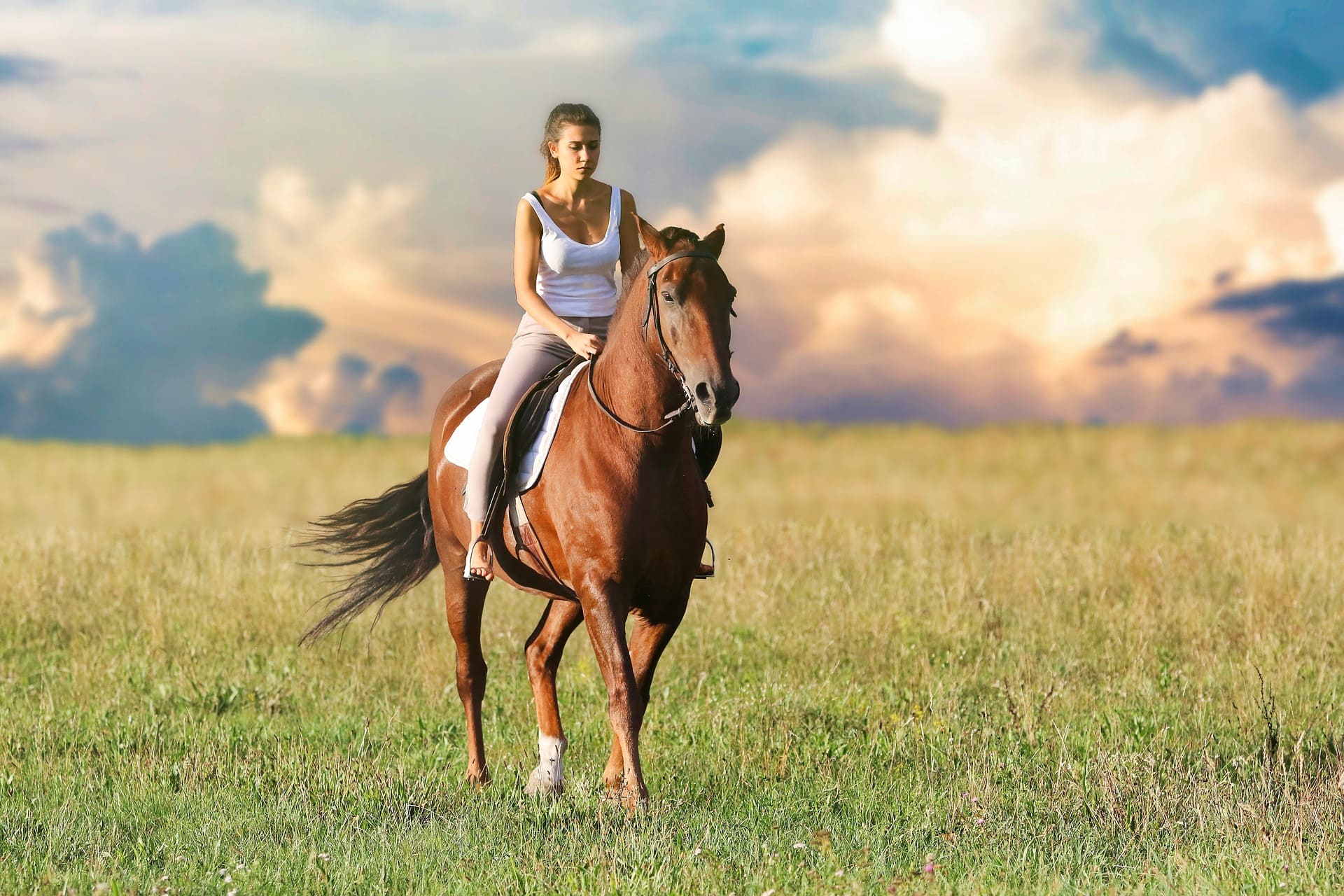
How Much Does It Cost To Own a Horse?
Caring for a horse requires a lot of space, time, and money. If you can keep the horse on your property, then you’ll save a lot on boarding. Should you need to board your horse, you should expect to spend between $200-$1000+ each month, depending on location, type of facility, and the services included. For $200 monthly, your horse would be boarded in a pasture and there’d be no stabling indoors. On the other end of the spectrum, when spending $1000+ a month on boarding, your horse would get all the amenities such as a private stall, arena and pasture access, and possibly more.
But boarding is just one part of your horse’s total care costs. Food is another major expense. Since a 1,000-pound (or 500-kilogram) horse can eat approximately 15–25 pounds of food each day, you’ll be spending a lot on hay or pasture. Standard-size hay bales generally weigh about 40-60 pounds, which means your horse could go through half a bale per day. Depending on where you live, this might cost $5 or it could cost $30 each day. Don’t forget to figure in the cost of grains, supplements, and salt blocks!
You’ll also have to consider the cost of healthcare for your horse. Equine dentistry costs between $100-250 per horse annually. You can add in another $200 each year for routine vaccinations and deworming. The farrier also has to be paid for shoes, which will likely cost $150-$400 for all four hooves.
What Kind of Home Does My Horse Need?
Your horse will need a stable and a large pasture in which to graze. For a single horse, you’ll need to provide about 1.5-2 acres worth of grazing land, so long as it’s properly managed. Granted, this is only if you expect your horse to graze for most of its food. If you’re providing plenty of hay, then your horse could get away with less space. However, the minimum amount of space necessary for an adult horse is 4500 square feet.
Your horse will also need a stable where it can go to escape the elements. The stable should provide shade from the sun as well as respite from the wind and rain. It should be dry, warm, and offer a comfortable and safe place for your horse to lay.
Inside your horse’s stable, you’ll want to provide a large bucket for grain. Hay can be put on the ground for your horse to eat as this mimics the way a horse would naturally graze.
Lighting for horses is simple. Your horse’s light should follow the natural light cycle of the sun. If the stable allows in light from outside, then no extra lighting will be necessary, though it might be helpful for you if you find yourself in the barn late at night or early in the morning.
The pasture your horse grazes and exercises in will need to be securely fenced in. Don’t underestimate a horse’s strength when constructing the fence. Many horses can walk right through thick fence beams. Remember, these horses have long been used to pull heavy carts, so make sure your fence is built strong enough to endure a horse’s weight!
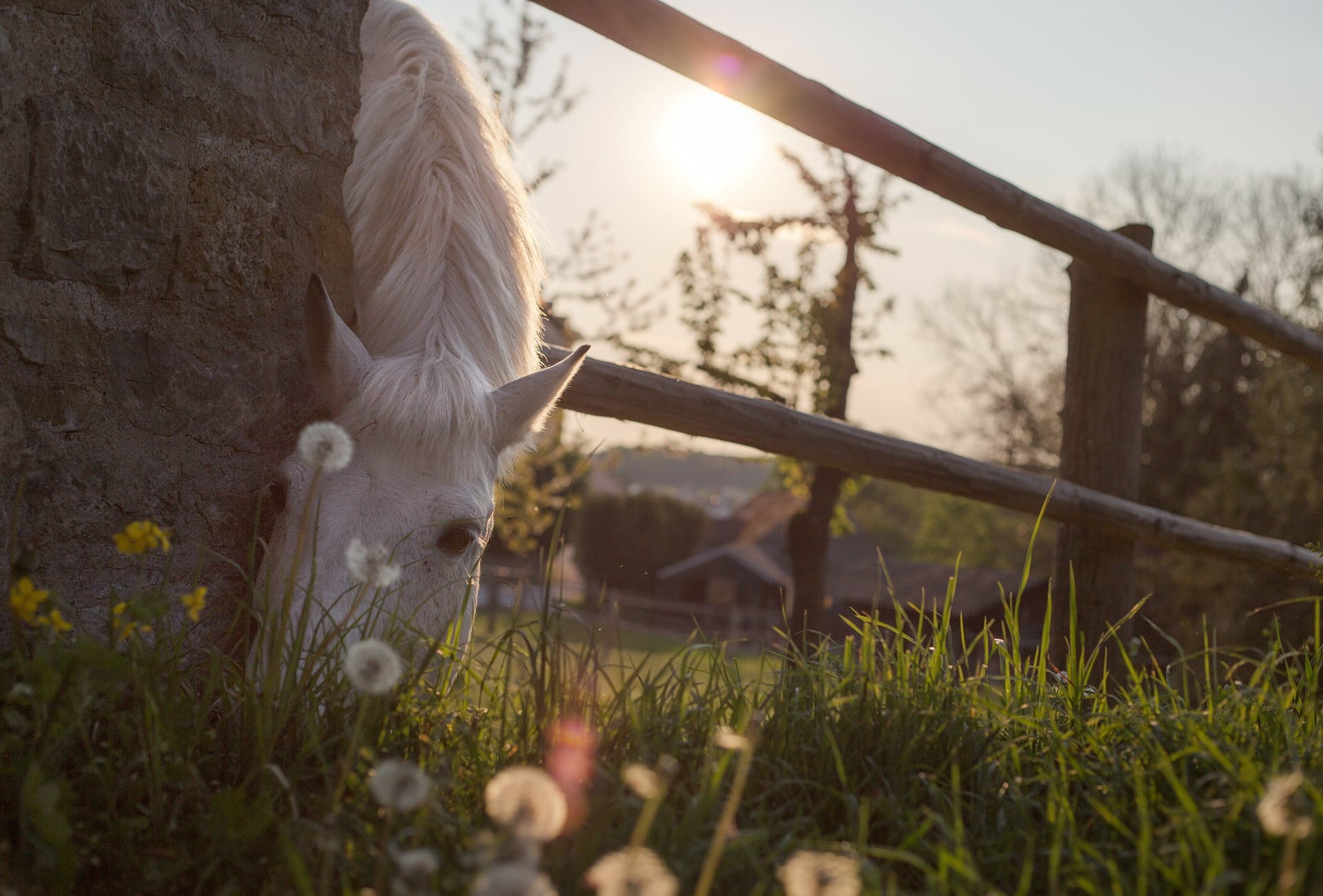
What Should I Feed My Horse?
As herbivores, horses mainly need forage (hay or grass), but grains and treats can also be given. For forage, you can offer your horse hay, or you can provide ample grazing pasture where it can slowly eat all it needs throughout the day. If your horse is strictly grazing for forage, you’ll need to provide between 1.5-2 acres of well-managed pasture for a single horse. Should you opt to feed hay instead, your horse will likely need between 15-20 pounds per day, which is about half of a normal-sized bale.
When it comes to grain, your horse will eat nearly as much. As a general guideline, you don’t want to feed your horse more than 11 pounds of grain each day, or its risk of colic increases. It’s best to offer grain in several smaller feedings and always follow your vet’s advice. Keep in mind, not all horses will even need grain. If your horse doesn’t do too much work and it gets plenty of forage, it should be able to get all the calories it needs from hay and grazing.
Naturally, your horse will need constant access to clean drinking water. Horses can easily consume 10 gallons of water in a day, so you’ll want to use a very large watering trough or bucket to provide sufficient water to last the day.
Supplements can help to fill any holes in your horse’s diet, but they’re not necessary for all horses. Still, supplements such as vitamins and minerals can aid your horse’s health, improve its coat, and make up for any deficiencies in the diet.

How Do I Take Care of My Horse?
We’ve talked a lot about the care that your horse requires, but in this section, we’ll discuss how you actually go about performing your horse’s care.
Feeding
There are several different ways you can accomplish your horse’s feeding. As explained, most of its intake should be in the form of forage. Your horse can get this forage through grazing in a pasture, or it can be hay that you provide.
Horses that exert a lot of energy might also benefit from grain in the diet. Grain should be fed twice a day, offering no more than five pounds per feeding.
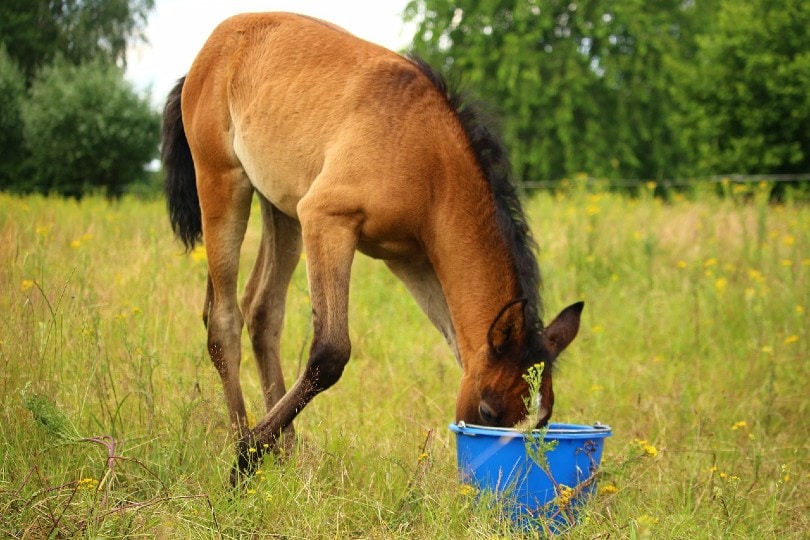
Grooming 🧽
Grooming is pretty simple, and it mostly consists of brushing your horse’s entire body. This should be performed quite often. For example, you should groom before and after each ride. For horses that aren’t getting ridden regularly, daily grooming is still recommended, though three to four times a week is a minimum. Grooming will help you to keep tabs on your horse’s health while simultaneously strengthening the bond and connection between you.
Riding
Horses need a lot of exercise. This can be achieved by simply providing ample space where your horse can run around at its leisure. But many people also want to ride their horses. Your horse can be ridden safely six days a week, so long as you let it build up to that frequency of riding and you provide sufficient nutrition and recovery time.
Shoes
One thing that’s rather unique to the equine world is the need for shoes or trimming of the hooves. While dogs and cats need their nails trimmed, neither require shoes nor trimming of the actual foot! You’ll need to call in some professional help for this, so make sure you keep a farrier’s number on hand. Your horse’s hooves will need attention every six to eight weeks, and if you neglect this, you could cause serious problems for your horse.
You should break this section up into topics like feeding, riding/handling, cleaning/bathing, temperature, exercise, socialization, hoof trimming (if required), and cleaning the shed.
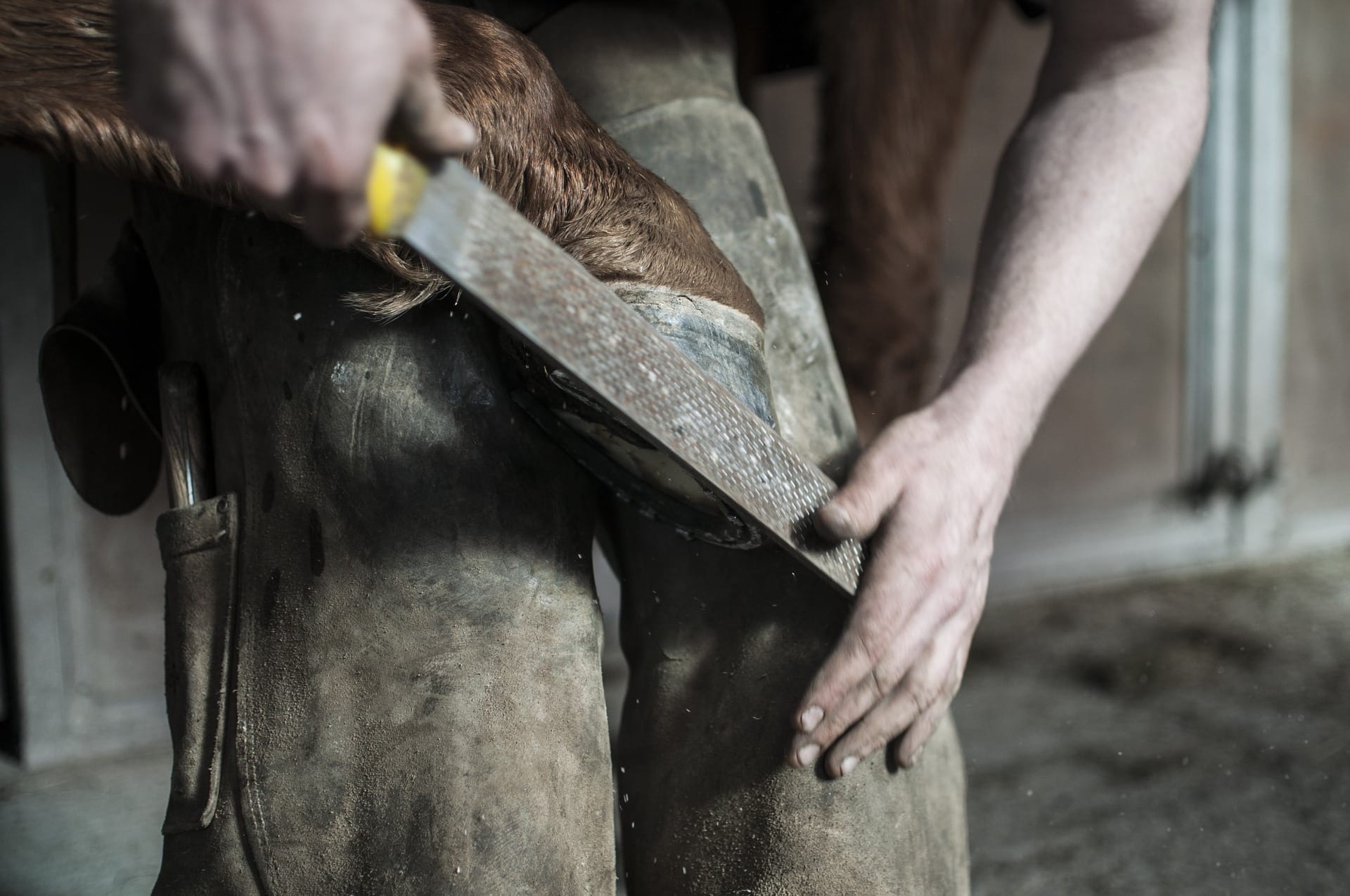
How Do I Know If My Horse Is Sick?
Equine Influenza – Related to, though distinctly different from the human influenza virus, equine influenza is a highly contagious sickness that affects a horse’s respiratory system. Outbreaks are most common around large equine gatherings, such as races, shows, and other events. It has a short incubation time of just one to three days, and a horse’s cough can spread it across 150 feet. The most recognizable symptoms include coughing, fever, lethargy, lost appetite, weakness, and nasal discharge.
Equine Herpesvirus (EHV) – There are several types of viruses within the equine herpesvirus family, though EHV-1,3, and 4 are considered to pose the highest disease risk to U.S. horses. EHV is a DNA virus that most horses have contact with, though it’s not always so serious. For reasons unknown, it develops into a severe, and sometimes fatal, disease in some horses and not others. This disease can be passed on through contaminated equipment such as grooming brushes, saddles, or other tack, or even contaminated feed buckets, trailers, or clothing. The most common symptoms are nasal discharge, swollen lymph nodes, fever, loss of coordination, lethargy, weakness in the hind limbs, and dribbling urine.
Equine Encephalomyelitis – Also known as sleeping sickness. Eastern, Western, and Venezuelan equine encephalomyelitis is a collection of viruses belonging to the same genus that are spread by mosquitos. The virus affects the horse’s nervous system and has a high rate of mortality. Unfortunately, in rare cases, this virus can even be passed to humans. The most common signs of disease in horses include fever, reduced appetite, aimless wandering, weakness, blindness, irregular gait, paralysis, convulsions, inability to swallow, and death.
- You may want to read this next: What Is Equiflunet?

Final Thoughts
Horses require a considerable amount of care, and it comes at a pretty hefty expense. You’ll need to provide ample space, food, time, and more. But don’t let that scare you away from horse ownership. Owning a horse is a very rewarding experience, and you’ll get more out of it than you put in. Horses make great companions, hard workers, and the most excellent of pets if you understand their needs and are both willing and able to meet them.
Related read:
- Influenza Outbreaks in Vaccinated Horses: Does It Happen? What You Need to Know!
- How to Neutralize Horse Urine (6 Ideas & Tips)
- Can Domesticated Horses Survive in the Wild? (Vet Reviewed Facts)
- https://www.cell.com/current-biology/fulltext/S0960-9822%2817%2930694-2
- https://www.merckvetmanual.com/horse-owners/brain,-spinal-cord,-and-nerve-disorders-of-horses/equine-viral-encephalomyelitis-encephalitis
- https://aaep.org/horsehealth/faq-equine-herpesvirus-ehv
- https://ceh.vetmed.ucdavis.edu/health-topics/equine-influenza-flu
Featured Image Credit: Pixabay
